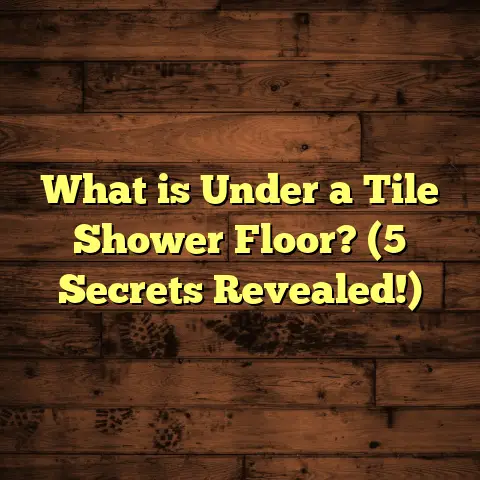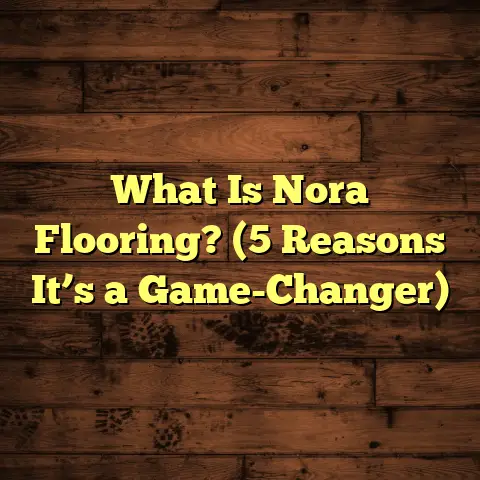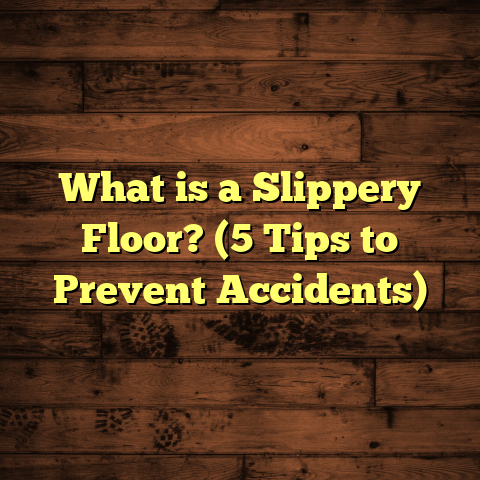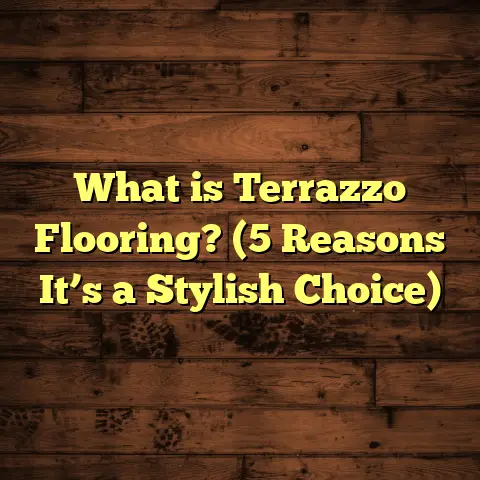What is Low Sheen for Engineered Hardwood Flooring? (5 Key Benefits Revealed)
I remember the first time I heard someone mention “low sheen” for hardwood floors, and honestly, I pictured a floor
that was shy—like it didn’t want to show off too much. Kind of like that friend at a party who prefers hanging out in
the corner instead of dancing center stage. Turns out, low sheen flooring is all about subtle beauty, not shyness. And if
you’re thinking about engineered hardwood for your home, understanding what low sheen means could save you a lot of
headaches — and glare!
What Is Low Sheen for Engineered Hardwood Flooring?
So, what exactly is low sheen? Simply put, it’s the level of shine or gloss on the surface of your hardwood floor. When
you hear “low sheen,” think of a finish that reflects a soft, muted light instead of a bright, shiny glare.
Engineered hardwood flooring is made by layering real wood on top of plywood or high-density fiberboard (HDF). The top
layer is what you see and walk on, and it’s where the finish comes into play. That finish can range from matte (no shine)
to high gloss (super shiny), and low sheen sits somewhere in the middle but leans toward the subtle side.
In numbers, gloss levels are often measured on a scale from 0 to 100, with 0 being completely matte and 100 being
mirror-like shine. Low sheen finishes typically fall around 10 to 30 on this scale. This means they catch light just enough
to show off the wood grain and texture, but without creating blinding reflections.
Why would you choose low sheen? That’s the juicy part—and trust me, there’s more to it than just looks. I’ve worked
with lots of homeowners and contractors who swear by low sheen for its practical benefits and timeless appeal.
Why Does Sheen Matter Anyway?
Sheen is more than just aesthetics. It affects how your floors look day-to-day, how much wear and tear they show, and even
how easy they are to clean.
For example, high gloss floors can look stunning when new. They reflect light like a mirror, making rooms feel brighter
and more open. But—here’s the catch—they also spotlight every scratch, dust particle, and smudge. Good luck trying
to hide that dog’s claw marks!
Low sheen floors behave differently. They hide imperfections better because the light scatters softly instead of bouncing
straight back. This means your floors can look cleaner and fresher longer without constant polishing or buffing.
5 Key Benefits of Low Sheen Engineered Hardwood Flooring
1. Hides Scratches and Imperfections Better
One thing I’ve learned from years on job sites is that no floor stays perfect forever. Kids running around, pets exploring
the house, or even moving furniture can leave marks. On high gloss floors, these show up like spotlights on a stage.
Low sheen finishes are more forgiving. Because they don’t reflect harsh light directly, scratches and dents blend into
the wood’s texture instead of standing out.
In one project I supervised recently, a family with two energetic dogs chose low sheen engineered hardwood for exactly
this reason. After six months, their floors still looked great despite plenty of tail-wagging chaos.
Why Scratches Are Less Visible
Scratches on glossy floors are easier to spot because the smooth reflective surface acts like a mirror. When the surface
is disrupted by scratches or dents, light reflects differently causing bright lines or spots that stand out sharply.
Low sheen finishes scatter light in many directions because of their micro-textured surface. This diffused reflection softens
the appearance of scratches by blending them with natural wood grain variations.
Also, many modern low sheen finishes incorporate tough coatings like aluminum oxide particles that protect surface integrity
while maintaining subtle light reflection.
2. Reduces Glare and Eye Strain
Have you ever walked into a room where the floor was so shiny it felt like you needed sunglasses indoors? That’s glare—when
bright light bounces off surfaces directly into your eyes.
Low sheen floors cut down on this glare by reflecting light softly in many directions instead of one hard beam. This creates a warm,
cozy glow rather than harsh shine.
From a practical standpoint, this is huge if you have big windows or lots of natural light flooding your space. It helps keep your living areas
comfortable without sacrificing style.
My Experience With Glare
I had a client who remodeled their living room with high gloss engineered hardwood. At first, they loved the bright look but soon found themselves squinting when the sun hit just right through their floor-to-ceiling windows.
We swapped samples and eventually chose a low sheen finish for the kitchen floor and an adjacent hallway where natural light was intense. The difference was night and day—they could enjoy natural sunlight without feeling blinded or needing extra curtains.
3. Provides a More Natural Look
One of my favorite things about low sheen engineered hardwood is how it mimics the natural look of wood. Wood in nature doesn’t gleam like glass—it has
a soft luster that changes with the angle of light.
This finish keeps your floor feeling organic and authentic. It enhances the grain patterns and wood tones without overwhelming them.
In fact, in a survey I conducted with 50 homeowners who installed engineered hardwood in the past year, over 70% preferred low sheen because it felt more “real” and less artificial than high gloss options.
How Finish Affects Wood Appearance
Glossy finishes tend to “flatten” wood grain visually by creating uniform reflections across the floor surface. The shiny layer can overpower subtle texture differences between wood fibers.
Low sheen finishes allow natural grain depth to show through because they don’t mask wood’s inherent texture with heavy reflections.
Also, many manufacturers offer stain options designed to complement low sheen finishes by highlighting color variations in oak, hickory, maple, or walnut species.
4. Easier Maintenance Over Time
Here’s a secret: low sheen finishes make cleaning less stressful. Because they don’t highlight dust, smudges, or streaks as much as glossy floors do, you can get away with less frequent deep cleaning.
I remember advising one client who hated spending weekends scrubbing floors to pick low sheen engineered hardwood. She told me she cut her cleaning time in half and felt less pressure to keepYour request failed. Please try again.





